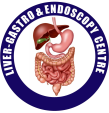Alcoholic fatty liver disease (ALD) and non-alcoholic fatty liver disease (NAFLD) are the most significant causes of chronic liver disease. The two variations of this disease differ in the reason excess fat accumulates, but both create a serious health condition. While ALD typically reverses when you stop drinking alcohol, NAFLD can progress to cause inflammation that can lead to liver failure.
What is non-alcoholic fatty liver disease?
The disorder known as non-alcoholic fatty liver disease (NAFLD) causes an accumulation of extra fat in the liver. Without alcohol consumption Alcohol-associated liver disease is the term used to describe a condition where excessive alcohol use leads to liver fat accumulation.
Non-alcoholic steatohepatitis (NASH) and non-alcoholic fatty liver (NAFL) are two kinds of NAFLD (NASH). Most people either get one type of NAFL or the other, while occasionally those with one form are later found to have the other type.
Non-alcoholic fatty liver (NAFL)
NAFL develops when there is an accumulation of fat in the liver without any damage to the cells or inflammation of the organ. Despite the fact that some individuals without risk factors can acquire NAFL for unexplained reasons, the majority have one or more risk factors, such as:
- Type 2 diabetes, prediabetes, or insulin resistance
- excess abdominal fat or obesity
- Having a poor diet and being sedentary
- Elevated triglyceride and/or cholesterol levels
- elevated blood pressure
- A cardiovascular condition
- Metabolic syndrome or metabolic disorders
- A history of certain infections, like hepatitis,
You’re also more likely to develop NAFL if you are Asian or Hispanic or are a postmenopausal woman. Sometimes, NAFL may be triggered by the use of some medications, exposure to certain toxins, or rare genetic diseases (e.g., Wilson disease).
Non-alcoholic steatohepatitis (NASH)
A more severe variation of NAFLD is NASH. If your NAFLD has resulted in liver cell destruction and inflammation, you have been diagnosed with NASH. Inflammation and cell damage work together to cause fibrosis, which results in liver scarring.
Cirrhosis is a condition that develops as a result of the scarring over time. In the liver, the scar tissue causes blockages that lead to bile accumulation and impair normal liver function.
There might be no indications of early cirrhosis. Yet, as it develops, it may evolve to causes symptoms such as :
- Leading to vomiting of blood
- Reduced appetite
- A blood vessel rupture
- Fatigue and weakened muscles
- Mental symptoms (e.g., forgetfulness)
- Eyes and skin that have become yellow (jaundice)
- Abdomen and lower limbs swelling
- Changes in the stools and urine
- Severe itchiness
- Propensity for bruising easily
- Higher infection rates
The formation and spread of abnormal cell tissue increases the risk of liver cancer in people with NASH. The aim of treatment is to delay the development of the scar tissue because the condition cannot be reversed.
How are NAFLD and NASH treated?
Treating NAFLD
Making significant dietary and lifestyle adjustments can restore fatty liver disease in most cases for patients with NAFLD but no inflammation or cell damage. Among these modifications are:
- Losing weight will decrease liver fat and inflammation.
- Changing to a plant-based diet that includes whole grains, fruits, and vegetables.
- limiting sugar, especially in beverages that are sweetened
- Increasing physical activity and exercise
- Controlling diabetes
- Lowering cholesterol and blood pressure
- Staying away from chemicals that strain your liver (e.g., alcohol, certain medications, certain vitamins and supplements)
Treating NASH Cirrhosis related to NAFLD:
While the FDA has not yet approved a drug to treat NASH, several medications can keep the cirrhosis from getting worse. Your NASH treatment strategy may include include the following in addition to the lifestyle modifications mentioned above:
- The use of drugs to treat signs like weariness, pain, or itching
- Supplemental nutrition to treat malnutrition
- Medication helps regulate blood pressure in your liver’s feeding veins and stop bleeding
- Drugs to lessen the accumulation of blood toxins
- Medications that lessen fluid retention and edoema
In the most severe cases liver specialists may recommend replacing the non-functional liver with a healthy organ.
Ready to learn more about treating fatty liver disease? Contact the Dr. Vasudev’s GI and Endoscopy Centre in Mumbai book an online consultation at your convenience.
